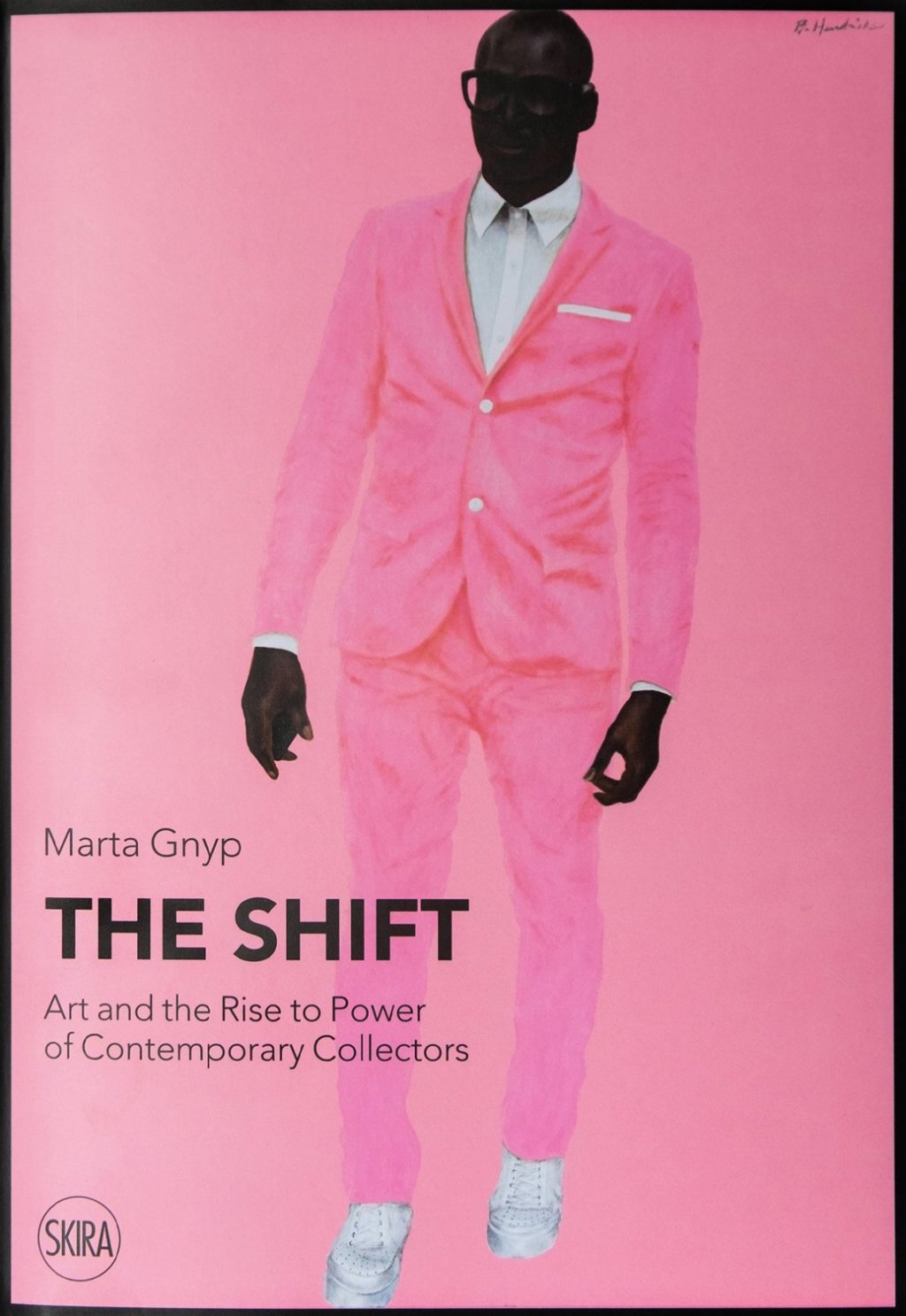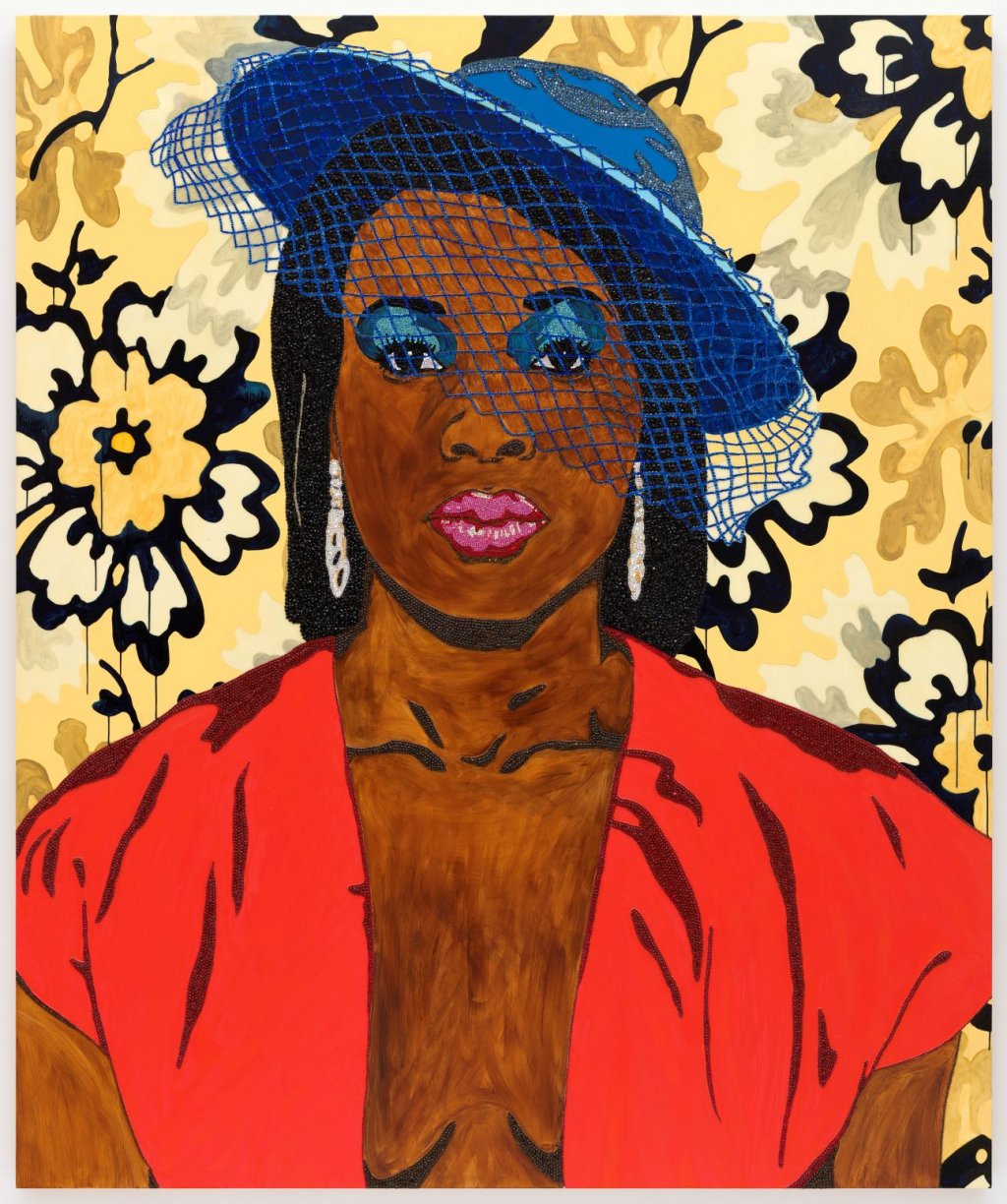Marta Gnyp’s explanation of the art world today
Marta Gnyp’s The Shift has come to its second edition. Is the art world still a place of speculation, navel-gazing, and colossal vanity?
Very few current human enterprises are as chaotic, dynamic, and vibrant as the contemporary art world. By any angle one chooses to look at it, its monumentality provokes vertigo. Its inner gears, the codes, the amount of money, prestige, actors, contacts—it feels like one can never be equipped enough to handle it. Besides, its fundamental values are forever changing; nothing feels stable for long. To the uninitiated, then, it all might feel like inhabiting the fantastic and sometimes nonsensical labyrinths Borges revisited throughout his oeuvre: It is hard to know how to get in or how to get out. In this sense, navigating ably in such turmoil is a considerable achievement. More remarkable still is the ability to detect transformations in this complex panorama, given its ongoing developments—and that is precisely what Marta Gnyp’s The Shift attempts to do.
[Here is our list of books every art collector should read. Ed.]

First released in 2015, The Shift arrives now at its second edition, updating some of its previous hypotheses and confirming them. Now, as five years ago, Marta Gnyp’s goal is to consider significant changes in contemporary art collections’ configurations, wondering what some of their principles and ideals are, the ideology and the direction such enterprises pursue, and why. Thus, through the analysis of “personal and collective interests of today’s collectors, as well as their social behavior and strategies,” the book intends to, according to Marta Gnyp words, “shed light on transformations and processes that have formed the conduct of contemporary collectors and, through them, the field of contemporary art.” Consequently, the book offers a valuable entry point into a still little studied landscape, by traveling from the micro to the macro.
The methodology the book summons is noteworthy. The Shift follows the discussions on the transformation and expansion of contemporary art collections by connecting them to the broader cultural domain, demonstrating how these collections are also responsible for shaping more prominent trends, from the configuration of artistic canons to the participation collectors and artists have in present societies. That is, the book shows how art collections’ influence extrapolates, more and more, the restricted domains of the art scene itself.

In order to pursue its objective, The Shift benefited from intensive research in the field of contemporary art, done from 2010 to November 2014. As a result, Marta Gnyp was able to analyze more evenly the changes occurring since the establishment of the Internet, the popularization of art fairs, some of the repercussions of the 2008 financial crises, and other essential landmarks that already impressed this new millennium, a time when “collectors massively shifted their interests to contemporary art, which has become the most popular collectible category of art.” The book established an audacious goal, and yet it delivered it, mainly because of the many fields the author herself is proficient. As Marta Gnyp explains in the introduction to the book, she started her own private collection in 2007, beginning, as of 2009, to also act as an art historian and lecturer at the University of Amsterdam, and as an art journalist in the following year. In 2011, increasing even more the breadth of her activities, she started performing as a gallery partner and then, in 2012, as an art advisor and art dealer. What’s more, Marta Gnyp never glamorizes the field she’s so surrounded by. For the most part, the hectic object is under control, despite the passionate force it fosters. Far from mere details, these insights provide valuable information on the many angles with which the author tries to tackle her theme.

The number of actors Marta Gnyp brought forth is vast. Gallerists, museums, artists, collectors, auction houses—all of them situated in many of the Western world’s greatest capitals, witnessed from a closer distance through interviews—a skill the author had already revealed in her other books, such as You, Me and Art (2019), and Made in Mind (2014)—or from a middle distance, as an interested bystander, always on the lookout. Needless to say, each of those she got in contact with in The Shift is connected to art according to various interests, from sheer aesthetic pleasure to shady ambitions. This situation demands a constant need of adjustment from the researcher’s point of view, so one doesn’t fall into the ubiquitous shortcomings that sprawls all over the art world: speculation of all sorts, navel-gazing, colossal amounts of vanity. Hence the panorama requirement to be ample, the necessity of accessing trustworthy data past beyond the agenda of illusions. Likewise, the book’s theoretical frame is considerable, establishing dialogues with authors immersed in the artistic debates (from recognized art historians and critics) and outsiders alike (like Pierre Bourdieu, for instance, a fundamental presence in the research). By deploying a more resonant analytic apparatus, The Shift distances itself from other publications that attempts to confront the art world by adhering to a “relaxed” approach, as if all its components were part of a parallel happy-go-lucky reality, a kind of outlook on eccentric types (inadvertently boosting the already huge egos that populate it). Hence, what Marta Gnyp presents is a network of art criticism discussions, fieldwork, and refined insights that elucidate the field of art collecting from the inside, amid its constant tension with capitalism and the speculative nature of collections—these strange new commodities in an interconnected world, loaded with its distinguished aura and ambiguities.

And what is exactly the shift that the title of the book alludes to? In brief, it indicates the advance of contemporary art collectors’ power, the “driving force behind the growth of the contemporary art market, acting in the networks of big auction houses and internationally operating galleries.” This expansion, far from being a casual one, brings about several superficial and profound changes in the art scene as a whole, an aspect that the second edition of the book was more prone to investigate. What The Shift does, then, is show how, despite the stealth nature some collectors claim, their choices are responsible for sensible changes in the way the art world develops, how it is influenced by a whole range of decisions these very collectors make.

The second edition of the book deals more thoroughly with four critical phenomena within the contemporary collecting realm, matters that have only grown in the later years. Expectedly, the books points to the “changing position of the artist and the progressing power consolidation in the hands of a few galleries worldwide,” two issues verified almost everywhere. One of the most exciting and speculative of these shifts, however, is the ongoing dialogue and the influence between art collections and the world at large, from academia to museums and beyond. Specifically, it points out to the impact of contemporary art collectors in molding, consciously or not, important itineraries—or showing, as the author writes, the “collectors’ contribution in reshaping of the art historical canon,” something that is “inextricably linked” to “an increasing social profiling through art.” These two other phenomena, undoubtedly, are the most consequential of all, steering to unpredictable outcomes, both inside the art market and within our sensibilities. In this respect, one of the most detectable of such gestures is the intensification with which contemporary art collectors and galleries are gradually paying more attention to the art of so-called minorities: Afro-American, Indigenous populations, and many others. In doing so, they aim to write a more “inclusive” art history, one based on an idea of “social justice,” and at the same time that it “creates a socio-political position,” it adds up “to their progressive profile.” However noble such initiatives are, once the economic value ascribed to these artistic manifestations starts to rise, one wonders if we are still in the terrain of virtuous actions or if we are entering the grounds of economic speculation (given that until up to some point, it is still possible to separate both of them). What are some of the discourses, postures, and effects that such orientation can enable? Would it, unwillingly or not, help to validate things like the obliteration of some art and artists’ category? Will a witches’ hunt follow from that, as a rebound from a claimed positive agenda?

We are still in the middle of this vortex to present categorical answers, and futurology has never had a good reputation among the so-called humanities. The moment an author sets a record, reality imposes itself, scrambling his or her assumption flagrantly. Indeed, Marta Gnyp is not prescribing how the transformations she perceives into the business of art collecting will turn out in the future, near or far. The author is merely laying out patterns. For sure, understanding the increasing power of contemporary collections in our times is already one of the most significant and timely aspects of the book. There are, naturally, still several changes that could provoke modifications in how this scene operates. For the time being, though, The Shift seems to have delineated appropriately which directions the signs are pointing to, however complicated this universe may appear to neophytes and experts alike. Luckily then, we have an intrepid author to guide us through the foreseeable and unforeseeable shifts the future of the art world holds.
February 15, 2021
